In January 2020, I set up my Salsa Fargo for the first time. And I’ve been rebuilding it ever since. The reasons for this were often wear and tear or the defect of certain parts, but above all technical innovations and the many experiences that I have been able to gain in the more than 26,000 kilometres I have ridden with the Salsa Fargo so far.
After the Atlas Mountain Race, I first changed my drivetrain and rims. After the Silk Road Mountain Race, I changed my braking system (mechanical to hydraulic), then changed the shifting system again and switched from mechanical to electronic and also changed the rims from aluminium to carbon.
Many of these conversions were mainly driven by my curiosity to try out new things and gain experience.
My motto: ‘I’d rather have a clue than just an opinion’.
And that’s also how you can categorise the current V4 project: it’s the fourth conversion of the bike and this time I’m trying out another technical innovation: SRAM Eagle Transmission.
If that doesn’t ring a bell: the Eagle Transmission is a new type of derailleur from the American/German manufacturer SRAM, in which the rear derailleur is not attached to a derailleur hanger, but is connected directly to the frame. This is made possible by the so-called UDH derailleur hanger, or the hole that is required in the frame to accommodate such a UDH. UDH stands for Universal Derailleur Hanger. This is SRAM’s attempt at standardisation, which began a few years ago and is now experiencing a breakthrough with the new SRAM shifters for road bikes, gravel bikes and mountain bikes.
The advantages of these new derailleur types are, in addition to even greater shifting precision, the ability to shift under load with less noise than the previous AXS and the fact that many parts of the new derailleurs are replaceable and therefore repairable. The most interesting point for me, however, was that the new transmission is supposed to be virtually indestructible.
At the market launch of the Eagle Transmission there were some impressive videos where people stood on the rear derailleur and jumped on it. Transmission derailleurs were hammered and hit on the ground – and still worked.
One reason for this resilience is that it is mounted directly on the frame. Among other things, this eliminates a nuisance that I’m sure many of you have had: a bent derailleur hanger. I’ve often had this and then had to replace it.
By the way: the UDH is a normal derailleur hanger and can therefore also accommodate normal rear derailleurs if required. If you remove the UDH, a ‘hole’ remains on the frame where the transmission is then mounted.
Although UDH has been around for some time, not all current frames are equipped or prepared for UDH. In my opinion, however, this will change very quickly, as SRAM now has the right products on the market with the new Red, the Red XPLR and the MTB Transmission drivetrains, as well as interest from customers.
Eagle GX Transmission x Fargo
As already mentioned: not all frames have UDH and therefore cannot accommodate Eagle Transmission derailleurs. This also includes many frames from Salsa. Although these would be predestined due to their interchangeable alternator dropouts, Salsa still does not offer UDH versions. Not even for the Fargo. When asked, Salsa merely said that they were looking into it. Perhaps there will be an update of the Fargo frame at some point and then UDH will certainly be on board.
And just in the last few days, the Americans have presented an update of the classic with the new Cutthroat, which now has UDH and can therefore also accommodate the new derailleurs.

When the Eagle Transmission shifters were introduced last year, I got in touch with Andre from trail.camp Distribution. He got in touch because he was working with OCD Solution from Berlin to produce high-quality UDH drop outs for the Fargo and other Salsa models as a DIY.
A year later, I contacted Andre again and after many months of development, the first UDH drop outs were machined in Dresden. I ordered a pair for the Fargo and started my next project: Salsa Fargo V4 – Transmission.
The assembly of the transmission requires some information, as it differs from the previous derailleurs. However, there are plenty of instructions from SRAM on the Internet. The drivetrain is installed according to the ‘set & forget’ principle: once installed, you don’t really have to worry about function and maintenance.
While the Eagle AXS still had adjustment screws for limiting the rear derailleur upwards and downwards, as well as a B-screw, this is no longer necessary with the Transmission. Once correctly fitted, it is automatically set correctly and works.
The conversion: drop outs
First I removed the original Fargo drop outs and fitted the OCD Loophole or trail.camp irregulator drop outs from trail.camp Distribution. These are made of aluminium and are manufactured in Dresden.

The dropouts are manufactured slightly differently and extend the chainstay. Therefore, the spacer bolts of the original dropouts are omitted here and the new ones are adapted directly to the frame. This gives me a chainstay length of 460mm.
The new dropouts cost around 250 euros (without thru axle) and are available for the following Salsa frames according to trail.camp Distribution – but currently only on pre-order:
MTB:
- Salsa El Mariachi steel from 2011
- Salsa El Mariachi Titanium from 2013
- Salsa Timberjack Aluminium 2017 – 2020
- Salsa Timberjack Titanium (tested up to 34T)
- Salsa Selma Titanium from 2011
- Salsa Ala Carte from 2011
MTB – Dropbar:
- Salsa Fargo Titanium from 2014
- Salsa Fargo steel from 2015
- Salsa Deadwood 2016
Trekking – Gravel:
- Salsa Marrakesh (tested up to 38T)
- Salsa Vaya Travel 2013 – 2015
Tandem:
- Salsa Powderkeg
Fatbike (requires different thru axle length)
- Salsa Mukluk Ti from 2012
- Salsa Mukluk Aluminium from 2013
- Salsa Blackborow 2015 – 2016
There are only slight differences in weight between the old and new drop-out: on the shifting side, the original weighs 57g and the new 78g. On the opposite side, the original weighs 70g and the new one 88g. The slightly higher weight is due to the fact that the OCD loopholes contain even more material than the Salsa drop outs, which have cut-outs.
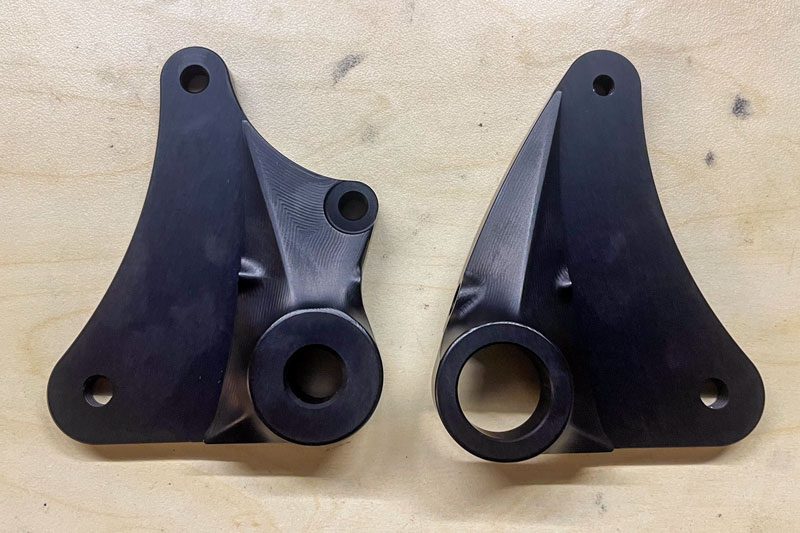
In terms of price, however, the difference is greater, as the original Salsa costs around 70 euros in total, whereas the trail.camp is around 180 euros more expensive. However, this can be explained by the manual work involved, the development costs and the production of small quantities.
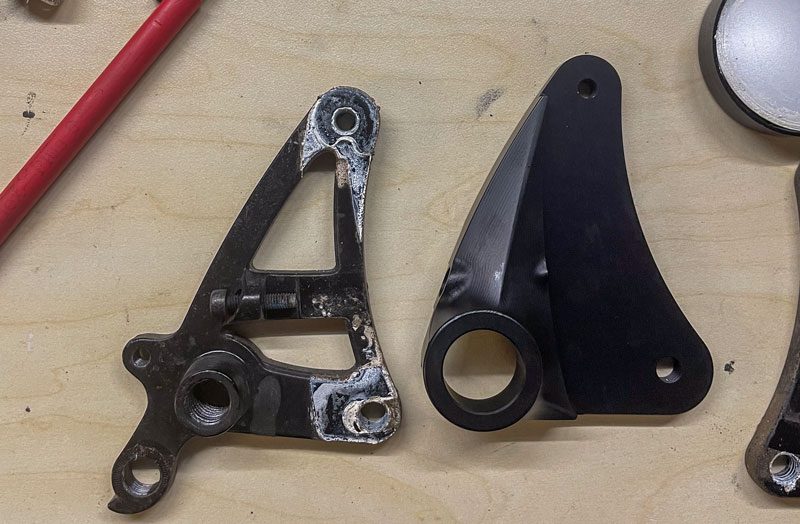
With the thru axle, however, you have to make sure that it is ‘UDH-compatible’.
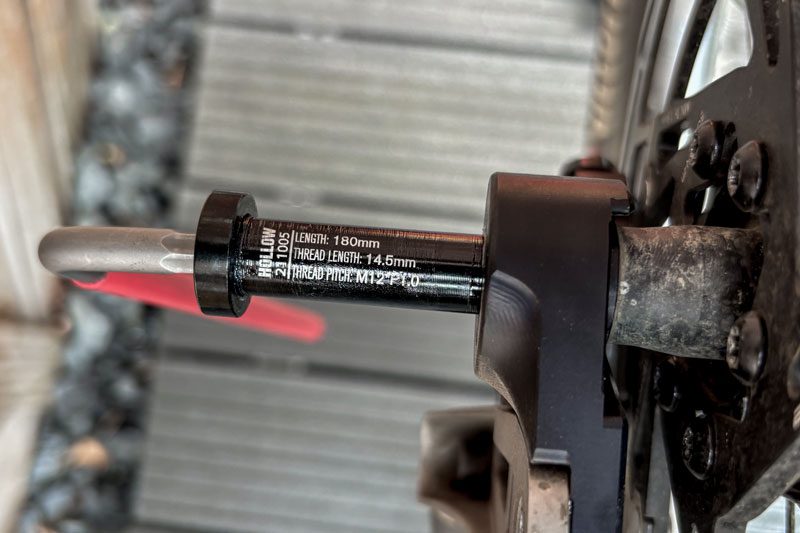
This means that in addition to the correct length (in my case 12x180mm with Boost), the thread pitch is also correct. This is apparently always 1.0 for UDH.

The conversion: crank & sprocket
To be able to use an Eagle Transmission drivetrain on an MTB, you must observe a chainline of 55 mm. This means that the distance between the centre of the bottom bracket and the chainring must be 55 mm. However, I didn’t want to use a GX Transmission crank and crankset for this, as they are quite heavy.
I therefore bought an XX1 Dub Wide Carbon crank, which has a longer axle and realises a chainline of 55 mm.
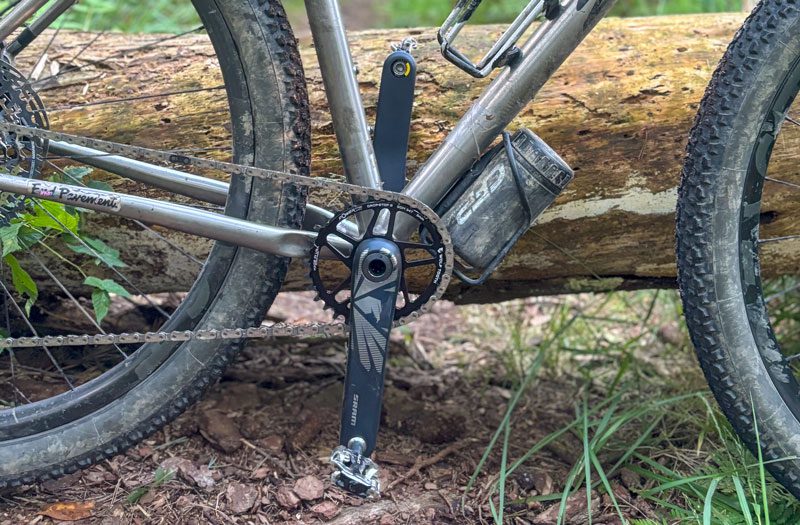
In order to mount the crank correctly, the appropriate spacers must be used during installation. SRAM provides information about the necessary widths.
I then tried it out and ended up using 3 mm spacers on the left and 4.5 mm on the right to achieve the 55 mm chainline.
As the transmission uses its own chain (flat-top), it also needs a corresponding T-type chainring with a suitable offset.
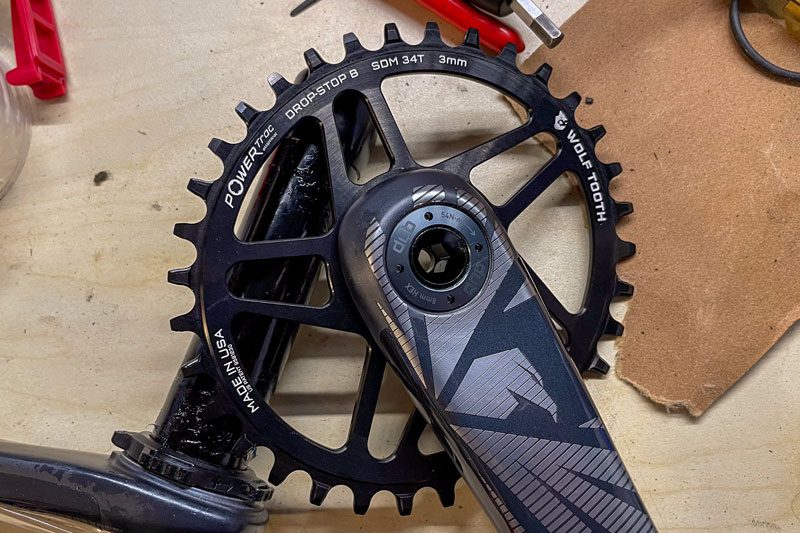
After some research, I chose the Wolftooth Oval Direct Mount with 34 teeth and 3 mm offset. The 3 mm is crucial for achieving the 55 mm chainline.
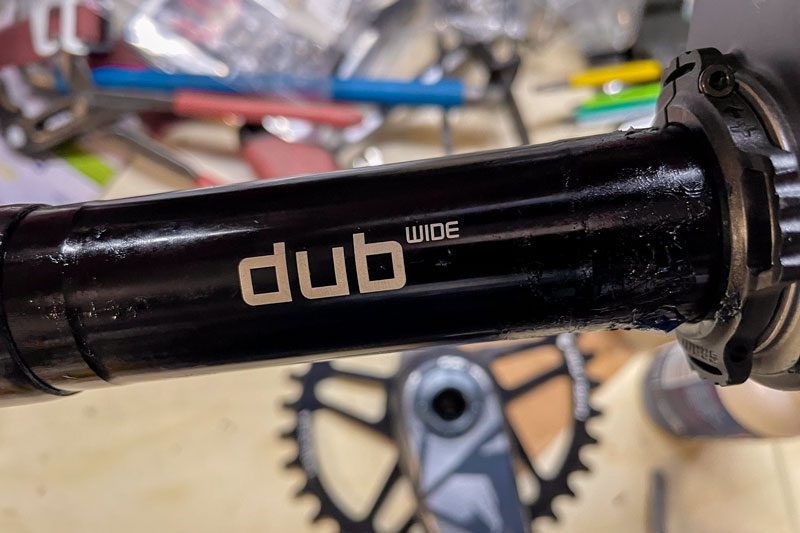
I also had to work on the bottom bracket: I use a BSA Enduro Bearing Maxhit bottom bracket for 30 mm cranks. But in a world full of standards, I also had to modify this again, because the Dub Wide crank has a diameter of 28.99 mm. To do this, I used the corresponding reducer shells from my Hope bottom bracket in the Enduro and can therefore ride the Dub Wide crank.

If you don’t have this, all you need is a DUB bottom bracket, which is available for 30 euros.
The conversion: Eagle Transmission rear derailleur & chain
I bought the Eagle GX Transmission rear derailleur and a corresponding flat top chain. I use my existing Rival AXS as shifters. I decided in favour of the GX version as it is completely sufficient for my needs and I simply didn’t want to invest any more money.
The GX Transmission rear derailleur weighs 468g, the GX AXS rear derailleur 443g.
The flat top chain weighs 285g with 126 links (uncut). The normal GX chain weighs 272g.
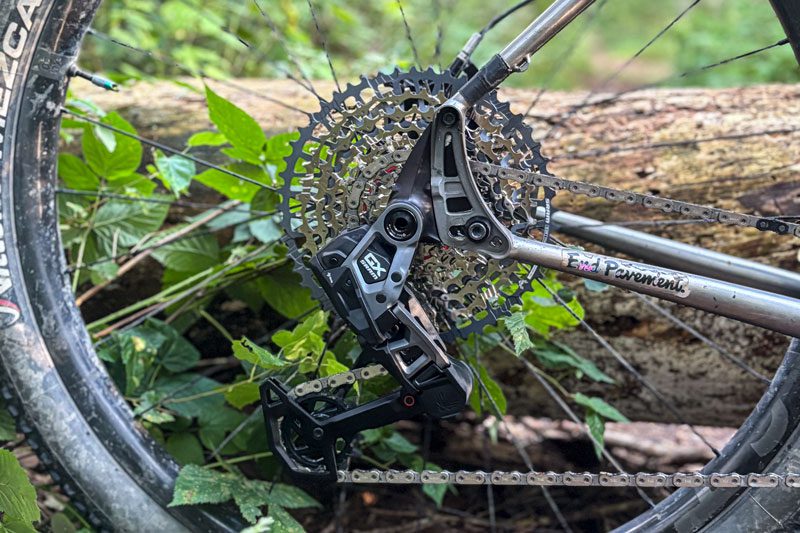
As mentioned above, the Transmission rear derailleur is mounted and adjusted slightly differently. However, this is very simple and is explained here in the SRAM video:
To determine which chain length you need and which set-up sprocket and derailleur positioning you need for your bike, you can find a tool here to determine this. To do this, the chainstay length is determined, from which all other data is then derived – depending on the type of bike.
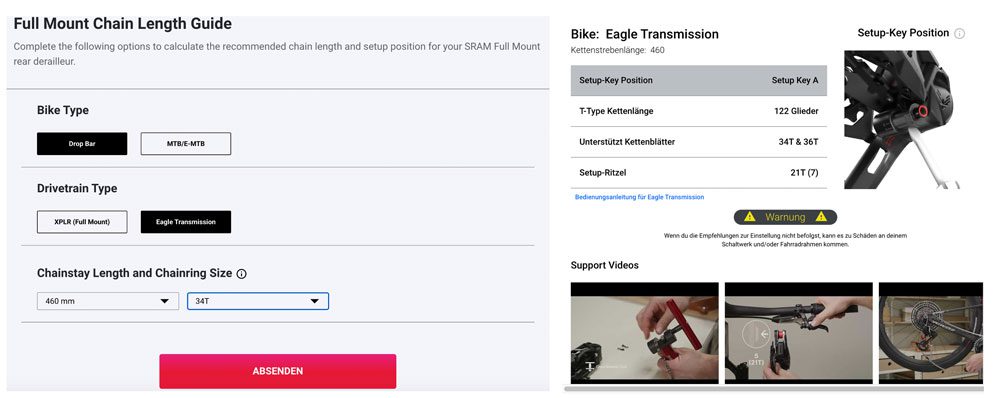
The correct shortening of the chain is also made easier by a template/instructions on and in the packaging of the chain.
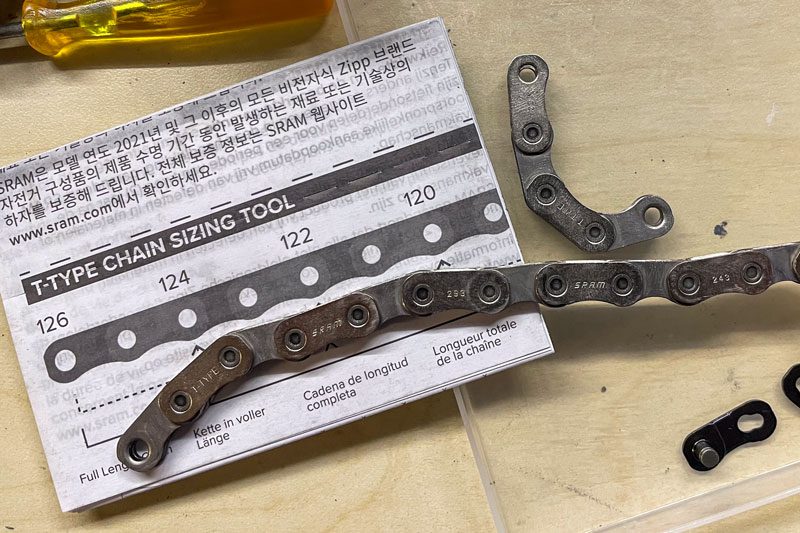
The cassette is currently only available in the 10-52 version, which weighs 445g. This makes it slightly lighter than the previous 10-52 Eagle GX cassette, which weighs 450g. In the T-Type cassette, the first 4 small sprockets are milled from a single piece (mini cluster). The other 8 sprockets are individual. 11 sprockets are made of steel, the largest (52) is made of aluminium.

As usual, the gear range is 520% with a gradation of 10-12-14-16-18-21-24-28-32-38-44-52. And here there is a difference to the previous GX cassette, which had a 36-tooth sprocket instead of the current 38-tooth sprocket and a 42-tooth sprocket instead of the 44-tooth sprocket. This means that the spacing towards the top has been reduced, i.e. sprockets 9-11 now have a spacing of 6 teeth. And towards the 12th sprocket, the distance has been reduced from 10 to 8. I think this is better, as the gear steps are not too large.

For a better overview and comparability:
| SRAM GX Eagle 10-52 cassette: | 10-12-14-16-18-21-24-28-32-36-42-52 |
| SRAM GX Eagle Transmission 10-52 cassette: | 10-12-14-16-18-21-24-28-32-38-44-52 |
Once the cassette, chain and derailleur are fitted, there is nothing more to do. Normally, the rear derailleur is already seated correctly and shifts precisely. If not, you can still make fine adjustments using the micro-adjust.
When it comes to the durability of the Transmission cassette and chain, I can’t say anything yet. But for comparison: I rode my previous GX cassette and chain for 12,000 kilometres without changing the chain and always used Squirt Lube. And I wasn’t squeamish and wasn’t particularly strict when it came to maintenance. But of course I didn’t measure my chains and don’t think much of it. As long as everything runs smoothly, it’s fine. And the system would have lasted even longer without the chain jumping or causing problems when shifting. And the wear on the cassette was also minimal. After about 9,000 kilometres, I accidentally fitted a new chain and didn’t even notice at first, as everything was running smoothly. It just looked conspicuously clean, which is why I realised my mistake and put the old chain back on. I expect at least a similar level of resilience and durability from the transmission components.
Conclusion
After the first few kilometres, I noticed that the smoothness and precision are even better than those of the normal Eagle GX AXS. Installation and adjustment are similarly simple. However, the Eagle Transmission has the advantage that no further derailleur adjustment, for example with the Chain Gap Tool, is necessary. Once correctly fitted, it sits correctly and shifts precisely.
However, the transmission is smoother when shifting. SRAM shifts a little harder than Shimano, for example. However, this is not the case with the transmission. Shifting here is more like gliding. Prior to the conversion, I had also heard that the Transmission shifts more slowly than the normal AXS. It is said that the transmission takes a ‘pause for thought’ and only shifts at the most favourable point. This is irrelevant in normal operation, but if you need to move quickly, the Transmission may shift gears a little more slowly than the previous MTB AXS.
As I have the normal AXS on one bike and the transmission on the Fargo, I have a good comparison and can try out a lot. On the kilometres I’ve ridden with the Transmission so far, I’ve noticed the slightly different shifting, but it doesn’t bother me. The gear changes are still fast and precise. With the normal AXS, the gear changes are sometimes not faster, but more noticeable. As mentioned, the transmission glides a little more. If you pay attention, you will notice it. But the nice thing is that you don’t really have to pay attention to it with the Transmission. Because what makes a real difference is that I can shift under load with the transmission. I’m conditioned to take the pressure off the pedal when shifting and then continue pedalling after the shift. With the Transmission, you can simply pull away. It also shifts under load, which completely compensates for any ‘pause for thought’ when changing gear. It’s fascinating how it works and I still have to get used to it.
Mounting it directly on the frame increases its durability enormously and reduces damage. And in the event of damage to the rear derailleur, the parts can also be replaced. I like this very much, as it means you can ideally avoid having to buy a complete new rear derailleur.
Connecting my old SRAM Rival AXS shift/brake levers to the GX Transmission rear derailleur was very straightforward. The AXS components work well together, which is one of the main advantages of the system, as you can mix and match road, gravel and MTB components and create your own customised shifting set. However, it is not possible to mix old AXS components with the new Transmission. Unfortunately, only all T-Type components work together.
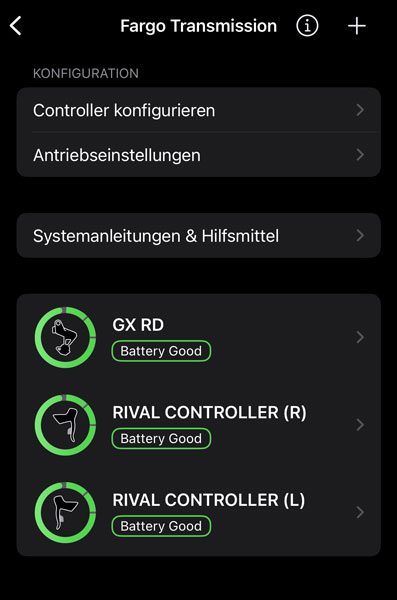
To be fair, it must also be said that switching to the SRAM Transmission means switching to a closed system (as with SRAM AXS), a walled garden so to speak. This means that in the event of a breakdown or system failure, you cannot simply fit a different rear derailleur, use a different chain or use a different cassette.
You have to keep this in mind, even if I am not aware that the AXS or the Transmission are prone to breakdowns and failures. On the contrary, you hear almost nothing negative and long-term tests show that the gears can cope with demanding conditions in the long term.
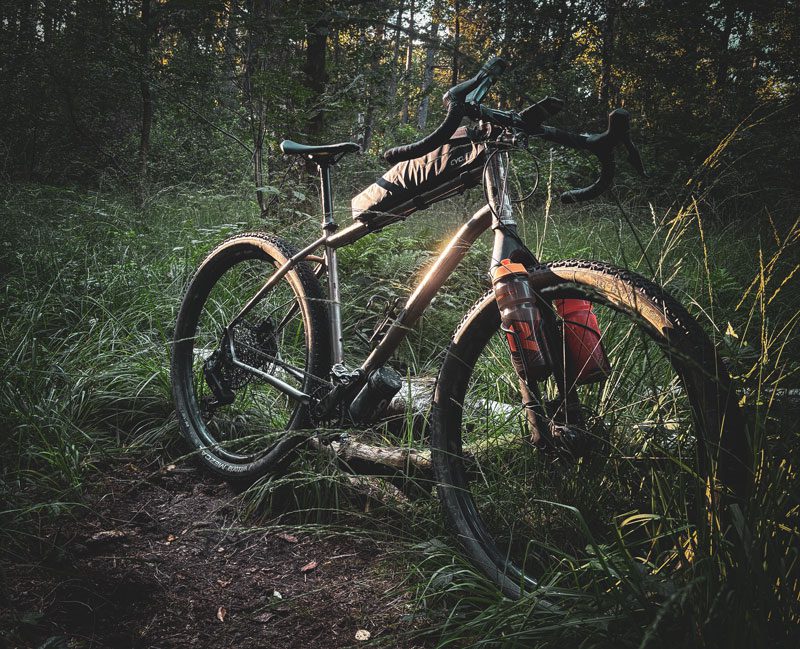
For classic touring cyclists with long tours around the world, however, this is nothing for them in my opinion. It would certainly work, but I would opt for a mechanical groupset for a crossing of Africa, for example. In my opinion, you can do everything below that with electronic gears 🙂
However, all of this is still quite expensive. The prices for the rear derailleur, sprockets and cranks are high, depending on the model class, but I assume that over time this technology will also be found in lower groupsets and the prices will continue to adjust.
But you don’t need all that to have a great experience on the bike. I’m only making this foray into high-tech shifting out of interest and to form my own opinion.
I’m looking forward to many kilometres with the GX-Transmission and I’m excited to see how it performs with my requirements. And the conversion of the Salsa Fargo is also continuing. I still have a few adjustments planned and would like to use it next year to tackle a project that I have been planning for some time. Stay tuned!

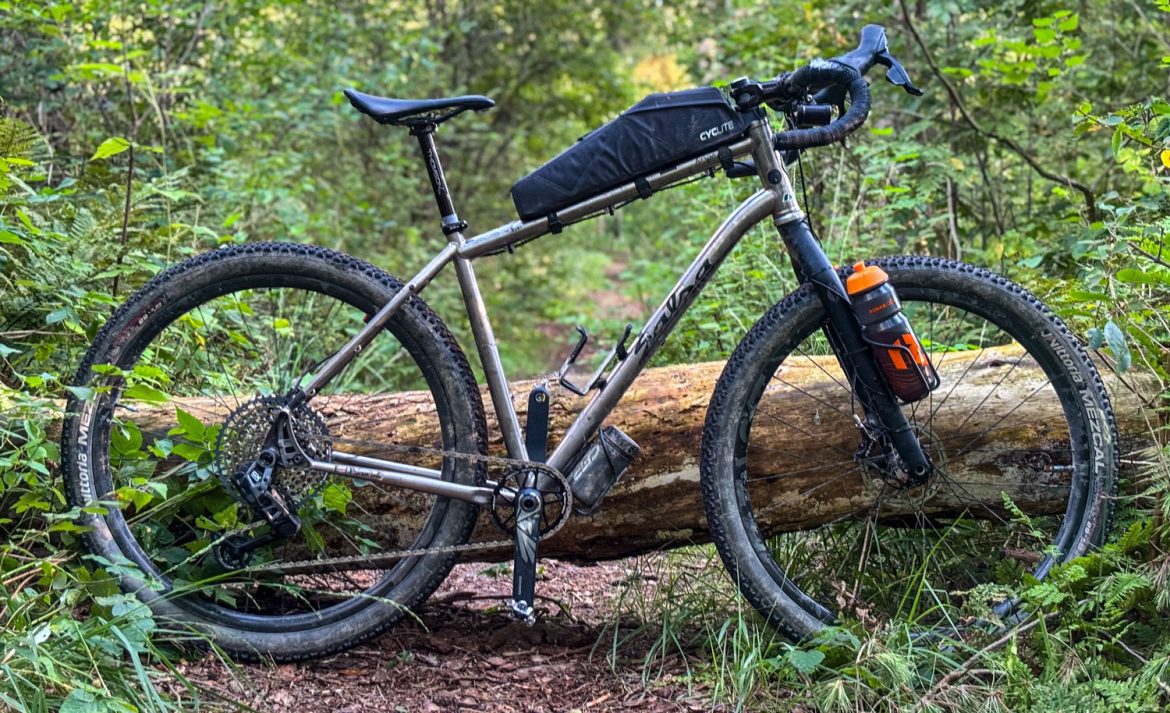


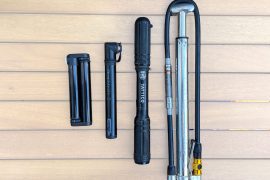

Looks awesome!
Until a bit ago I had my Salsa Fargo setup with a SRAM GX Eagle setup with the Ratio Technology upgrade to a mechanical 1×12 drop bar setup with Apex shifters.
Worked like a charm. But I am also unsure if that one would have worked well for long term touring since it is quite custom. And I am unsure how durable that one would have been for very long trips.